The fashion field is not all about trends, aesthetics, and the latest and newest spectacle on the runway. Sometimes legal matters concerning intellectual property, trademarks, and design come to the fore. Over the years. several cases have hit the headlines and changed how the fashion world operates, from high-profile brand protection lawsuits to disputes on counterfeit cases. Here are stories of 15 of the biggest fashion lawsuits that stunned the industry and had every observer sitting at the edge of their seat.
1. Tiffany (NJ) Inc. vs. eBay Inc.

Tiffany & Co. sued eBay in 2004, claiming that the online marketplace enabled the sale of fake Tiffany jewelry. The case centered on whether online marketplaces should be held liable for failing to prevent the sale of counterfeit products. Tiffany claimed that eBay was being willfully blind to the vast counterfeit trade on its platform, which was undermining its luxury brand. In 2008, per WWD, the judge ruled in favor of eBay as it did not find the e-commerce platform liable.
2. Chanel vs. The RealReal

In 2018, Chanel sued The RealReal in the U.S. District Court, alleging the online luxury consignment platform sold counterfeit Chanel items and misused its trademarks, damaging the brand's reputation. The RealReal defended its rigorous authentication processes and asserted that it legitimately resold pre-owned Chanel goods. Per Flatfee, in June 2019, the court ruled in favor of The RealReal, finding no evidence of deliberate counterfeit sales.
3. Gucci vs. Guess
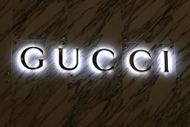
Gucci sued Guess in 2009 for trademark infringement, alleging the brand had copied its well-known designs, such as the green-red-green stripe and the interlocking "G" logo. Gucci alleged damages, claiming that the similarity between the two brands would likely cause consumers to mistake one for the other. Per FashionLawBusiness, Guess agreed to pay damages, in 2012. However, Gucci filed several more lawsuits against Guess in different countries, per the outlet.
4. Hermès vs. MetaBirkins

Hermès sued digital artist Mason Rothschild in 2022 over his "MetaBirkins" (NFT art inspired by the iconic Birkin Bag). Hermès alleged trademark infringement, claiming that the meta-birkins might have confused consumers into believing they were produced by the luxury brand. This lawsuit sets off great debates on intellectual property concerning the emerging world of digital art and NFTs, concerning how luxury brands will then protect their trademarks in that virtual space. Per WWD, the jury ruled in favor of Hermès in 2023.
5. Louis Vuitton vs. Dooney & Bourke
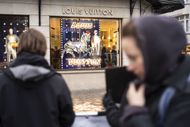
Louis Vuitton filed an infringement action against American handbag maker Dooney & Bourke, which accused the latter of copying the unique Louis Vuitton monogram pattern. The company argued that a similar monogram on Dooney & Bourke handbags infringed its trademarks. The case ended in 2008, per Forbes with the judge ruling in favor of Dooney & Bourke.
6. Christian Louboutin vs. Yves Saint Laurent
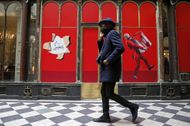
Christian Louboutin sued Yves Saint Laurent, in 2011, claiming that the high-fashion footwear's monochrome line was trademark infringement of his red-sole shoes. Per WWD, the suit was dismissed in 2012, as a Manhattan federal court ruled that Louboutin had no further claims against YSL.
7. Levi’s vs. Guess
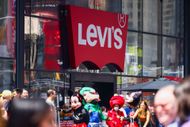
Levi Strauss & Co. sued Guess Inc. in January 2024 over alleged trademark infringement of its signature pocket tab. Levi’s argued that Guess’ pocket designs were too similar, leading to potential consumer confusion. As per FashionLawWatch, Levi's, themselves dismissed the lawsuit, reportedly after a settlement.
8. Victoria’s Secret vs. Thomas Pink

In 2013, Thomas Pink claimed trademark infringement against Victoria's Secret alleging that they were using the term "PINK" as trademarked by the retailer. The case marked one of the most important battles so far in the battle over companies in the lingerie sector. Per Dyoung, The UK High Court ruled in favor of Thomas Pink in 2014.
9. Burberry vs. Target
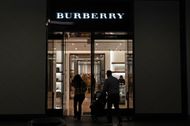
In 2018, Burberry sued Target for selling items with a pattern that was almost identical to its iconic check pattern. Burberry claimed that Target was infringing on its trademark, which was associated with luxury fashion and heritage. The case was newsworthy because of the difference in positioning between the two brands: Burberry as a high-end label and Target as a mass-market retailer. Per RetailDive, in October 2018, the case was eventually settled as the parties voluntarily dismissed the case, and Target agreed to stop using the pattern, but it highlighted the problems in the protection of intellectual property in a very crowded marketplace.
10. Adidas vs. Skechers

Adidas filed a lawsuit in 2015, against Skechers, accusing the brand of copying its iconic three-stripe design in its "Onix" sneakers. Adidas claimed that Skechers was intentionally trying to benefit from Adidas’ reputation and popularity by mimicking its design. Per Aldrich Law Firm, in May 2018, the two parties settled the case in a confidential agreement. This legal battle emphasized the importance of protecting signature branding elements in a highly competitive market and highlighted how quickly design similarities can escalate into major lawsuits.
11. Abercrombie & Fitch vs. American Eagle

In 2022, Abercrombie & Fitch filed a lawsuit against its retail competitor, American Eagle, alleging that the latter had copied its retail strategies and store layouts. The case marked a significant attempt by Abercrombie to safeguard its unique branding and consumer appeal in a highly competitive market. However, the court found the evidence presented insufficient to support the claims. Per Justia Law, the lawsuit was dismissed in 2023.
12. Forever 21 vs. Gucci
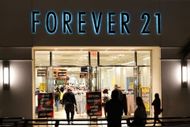
Forever 21 preemptively sued Gucci in 2017, arguing that its use of stripe motifs didn’t infringe on Gucci’s iconic designs. Gucci had previously sent cease-and-desist letters, claiming the motifs were trademarked. Forever 21 sought legal clarity but faced counterclaims from Gucci. Per YLCC, the case concluded in November 2018 through a settlement, with the terms remaining confidential. This legal battle highlighted the challenges of protecting design elements in fast fashion.
13. Prada Group and Amazon vs. Counterfeiters

Prada Group, Amazon, and other luxury brands filed a lawsuit after Amazon's Counterfeit Crimes Unit in 2021 reported counterfeiters operating in China. Per Prada Group, in 2023, the judgment sentenced the defendant to three years in prison and a $25,000 fine. This victory highlighted Prada's commitment to safeguarding its intellectual property and the integrity of its brand.
14. H&M vs. Artist
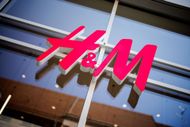
H&M was sent a 'cease-and-desist' letter by a Swedish artist in 2018, per the Washington Post, who asserted that his artwork had been infringed on by the fashion retailer. According to him, the firm had reproduced his designs on several products but did not license those works or compensate him in return. After this H&M sued Revok (the artist) alleging that since the artist's work was done illegally, it could not be protected with copyright. Per Revok's Instagram post in September of the same year, the two parties settled the case and decided to make contributions to art organizations.
15. Adidas vs. Thom Browne

Adidas filed a lawsuit against fashion designer Thom Browne in 2021, claiming that his use of a four-stripe pattern on his apparel and footwear infringed on Adidas’ trademarked three-stripe design. Adidas argued that the similarities could confuse customers and dilute their brand identity. Thom Browne maintained that his design was distinct and did not intend to mimic Adidas. Per Fashionista, in 2023, the jury ruled in favor of the designer.
